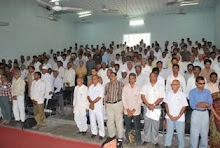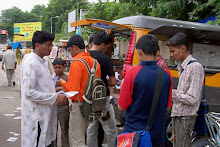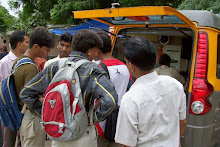THE WEEK: Uttar
Pradesh: Saturday, 07 March 2020.
The
response to a Right To Information (RTI) query has revealed that while the
state government is running one-stop crisis centers in all 75 districts, the
numbers of these centres are not known to it.
RTI
activist Urvashi Sharma, had on February 11, 2019 sought information on 10
points around the two integrated schemes, the 181 Women’s Helpline and One Stop
Centres (OSCs)—flagship projects of the Ministry of Women and Child
Development, Government of India (MWCD-GOI). Popularly known as Sakhi, the OSC
scheme was launched across the country in April 2015, to address violence
against women.
The
questions in the RTI query included: details of agencies tasked with managing
the universal helpline number 181, numbers of districts with operational OSCs
and their phone numbers, details of agencies managing the OSCs—with a view to
understanding whether web-based management and monitoring of cases from
district to the central level had been made possible, how women helpline and
crisis centres had been integrated, whether the state was following the Raipur
web-based model or was considering implementation of the same, what alternative
Management Information System (MIS) was being used to integrate the two and
whether the government planned to continue without an integrated model.
It
took the state’s Department of Women and Child Welfare more than a year to cull
out the information and Urvashi received the responses on February 28, 2020.
The
department responded that one-stop crisis centres were operational in all 75
districts of the state. Yet it did not provide the phone number of even one
centre. The agency that operates the 181 helpline number is based in
Secunderabad.
On
the issue of integration, the department answered that when a district related
call is received at the 181 helpline, it is referred to the particular
district. This is not exactly as the scheme was envisaged by its parent
department. The Women’s Helpline (WHL) and OSCs were designed to operate in an
integrated manner, which means only one case file will be created for one case
and the same will be shared by WHL and OSC. That file is also to be available
on the web for intervention and monitoring.
The
reply admits that there is no web-based MIS model for integration of the two.
The Raipur model has not been implemented in the state.
The
much praised Raipur model is an outsourced model which draws from the
implementation guidelines that provide procedures and processes for
implementation of the schemes, highlighting roles/responsibilities of various
line departments and indicating monitoring and reporting formats for different
levels. While as in the rest of India WHL is a 24x7 free phone helpline to
provide a women in need access to both emergency and non-emergency response
services. OSCs are established, one in each district of Chhattisgarh, to
support WHL by facilitating under one roof, access to a range of services that
include medical assistance in the event of violence, legal and psychological
support, temporary shelter, police assistance, video conferencing to facilitate
police as well as court proceedings, assistance in pursuing legal
recourse/remedies and information and support to access social welfare schemes
of the state government and that of the union government.
While
the integration is yet to be worked out, the response says that the Sakhi
dashboard of the Government of India is used to maintain data.
Urvashi
said, “The information received to my query is just in the nature of a
formality and yet it took the department more than one year to provide it. This
government has talked big about technology and women’s empowerment but till
date has not been to able to put up a website for the scheme. The response does
not indicate any government plans to implement a web based model as envisaged
by the scheme.”














































































